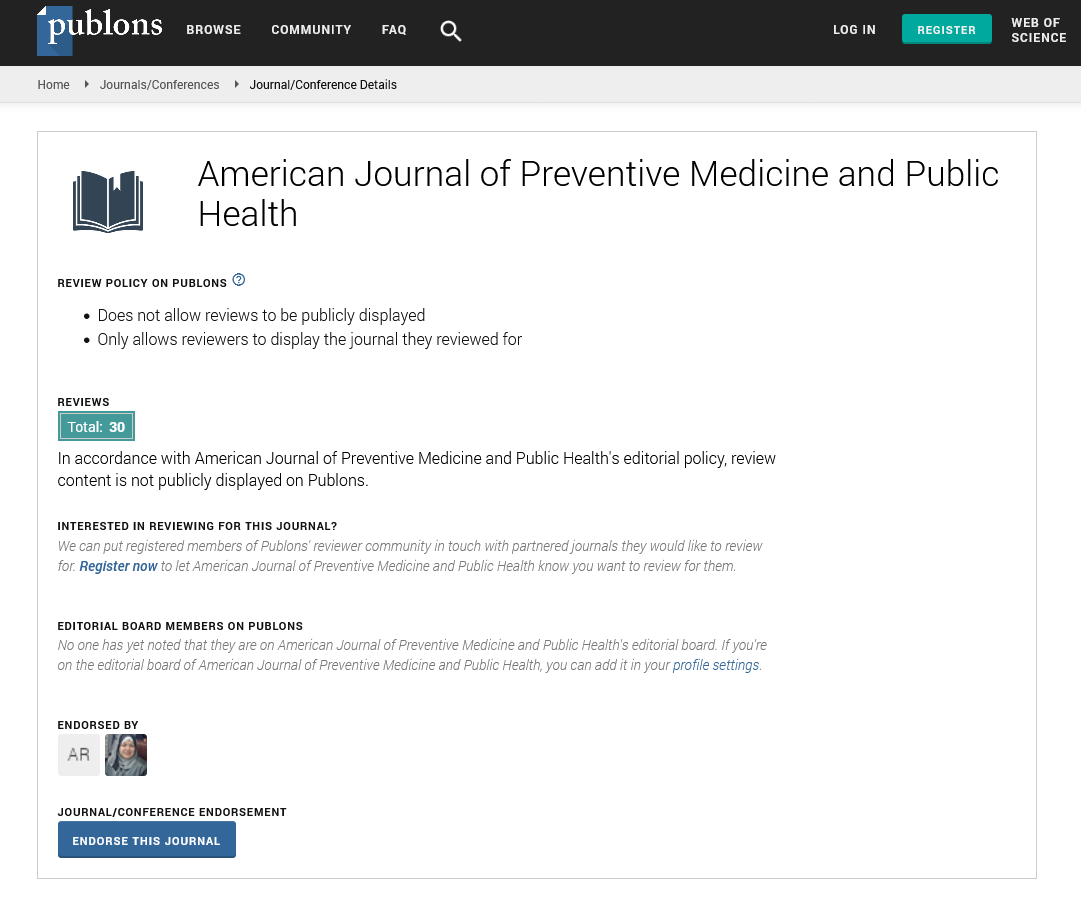Commentary - American Journal of Preventive Medicine and Public Health (2022)
Emphasis on Skin Cancer and its Preventive Measures
Randy Gordon*Randy Gordon, Department of Dermatology, Walter Reed National Military Medical Centre, Bethesda, USA, Email: randygordon01@gmail.southalabama.edu
Received: 06-Jun-2022, Manuscript No. AJPMPH-22-69623; Editor assigned: 08-Jun-2022, Pre QC No. AJPMPH-22-69623 (PQ); Reviewed: 23-Jun-2022, QC No. AJPMPH-22-69623; Revised: 28-Jun-2022, Manuscript No. AJPMPH-22-69623 (R); Published: 05-Jul-2022
Description
Cancers that start in the skin are known as skin cancers. They result from the growth of aberrant cells that can infiltrate or disseminate to different areas of the body. Basal-Cell Skin Cancer (BCC), Squamous-Cell Skin Cancer (SCC), and melanoma are the three main kinds of skin cancer. Nonmelanoma Skin Cancer (NMSC) refers to the first two as well as other less frequent skin cancers. Basal-cell cancer has a modest growth rate, has the potential to harm nearby tissue, but is not likely to metastasize (spread to other places) or be fatal. It frequently manifests as an ulcerous, elevated, glossy, and frequently painless region of skin with little blood veins flowing over it. The spread of squamous-cell skin carcinoma is more likely. Although it typically appears as a hard lump with a scaly surface, it can potentially develop into an ulcer. The most aggressive tumours are melanomas. Moles that have altered in size, form, or colour, have irregular edges, have several colours, itches, or bleeds are all warning signs.
Melanoma and squamous-cell skin cancer appear to be preventable through reducing exposure to UV radiation and using sunscreen. If using sunscreen reduces the incidence of basal-cell cancer is unclear. Skin cancer without melanoma is typically treatable. The most common form of treatment is surgical removal, while radiation therapy or topical drugs like fluorouracil may also be used less frequently. Surgery, chemotherapy, radiation therapy, and targeted therapy may all be used to treat melanoma. Palliative care may be used to enhance quality of life in persons whose sickness has spread to other bodily parts. Over 86% of those diagnosed with melanoma in the UK and over 90% in the US go on to survive for more than five years, making it one of the cancers with the highest survival rates.
Prevention
Sunscreen is useful in preventing melanoma and squamous-cell carcinoma and is therefore advised. There is not much proof that it works to prevent basal-cell carcinoma. Avoiding sunburns, donning protective gear such hats, sunglasses, and clothes, and seeking to prevent prolonged contact to the sun are further recommendations to lower the prevalence of skin cancer. The U.S. Preventive Services Task Force advises against exposing children under the age of nine to ultraviolet light. Several steps can be taken to lower the chance of acquiring skin cancer, such as cutting back on indoor tanning and midday sun exposure, using sunscreen more frequently, and quitting smoking.
Because UV light is involved in both tanning beds and excessive sun exposure, it is crucial to restrict both of these activities. Skin cells are known to be harmed by UV light because their DNA is altered. Skin cancers and other growths may develop as a result of the DNA mutation. Beyond merely UV exposure, there are other risk factors. A few examples include fair skin, a long history of sunburns, moles, and a family history of skin cancer.
Either way, there is not enough evidence to support or refute skin cancer screening. Antioxidant and vitamin supplements have not been discovered to have a role in prevention. There is conflicting epidemiological research that suggests dietary changes may lower the incidence of melanoma, but no clinical trials have been conducted in this area. While some foods may reduce the incidence of sunburns, sunscreen offers a considerably greater level of protection.
Copyright: © 2022 The Authors. This is an open access article under the terms of the Creative Commons Attribution NonCommercial ShareAlike 4.0 (https://creativecommons.org/licenses/by-nc-sa/4.0/). This is an open access article distributed under the terms of the Creative Commons Attribution License, which permits unrestricted use, distribution, and reproduction in any medium, provided the original work is properly cited.







